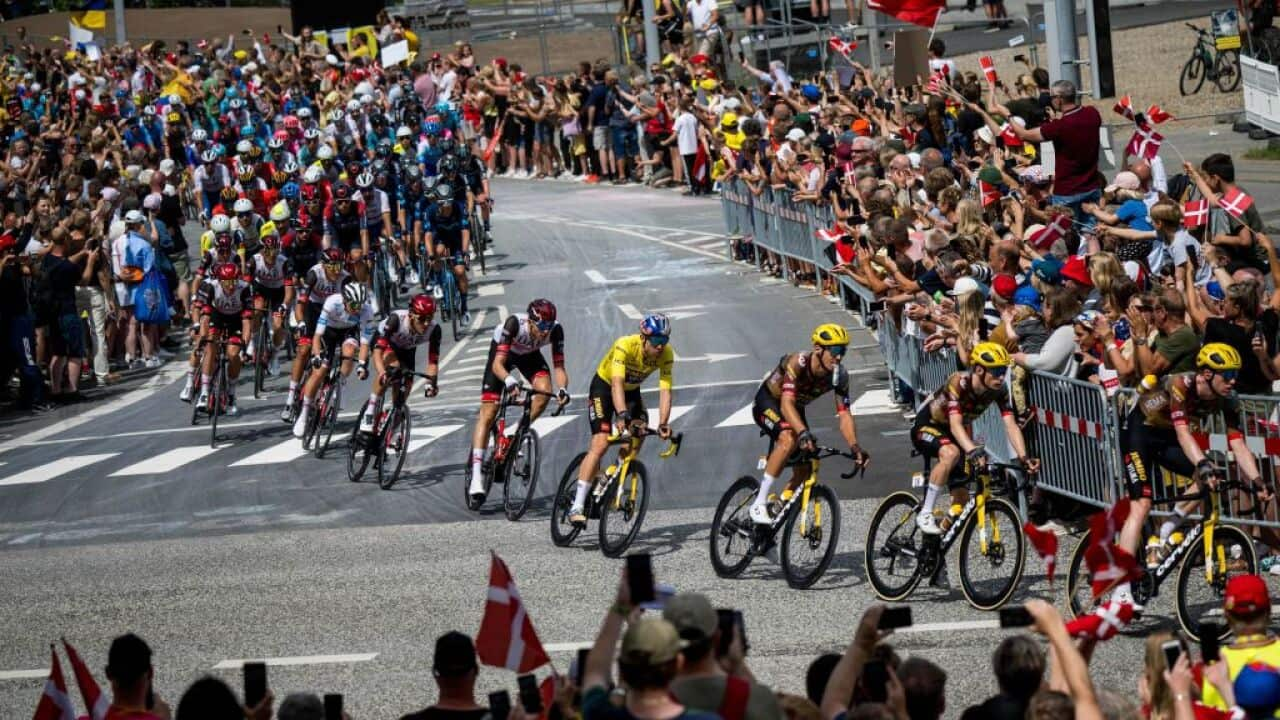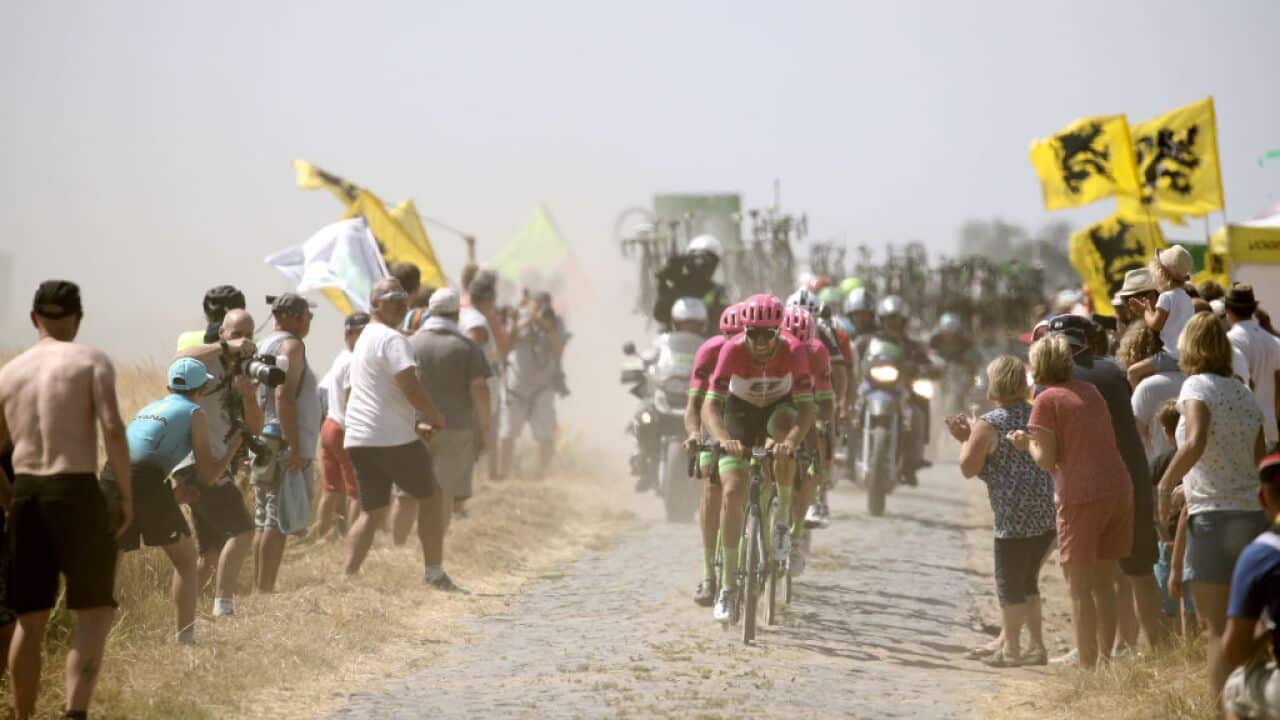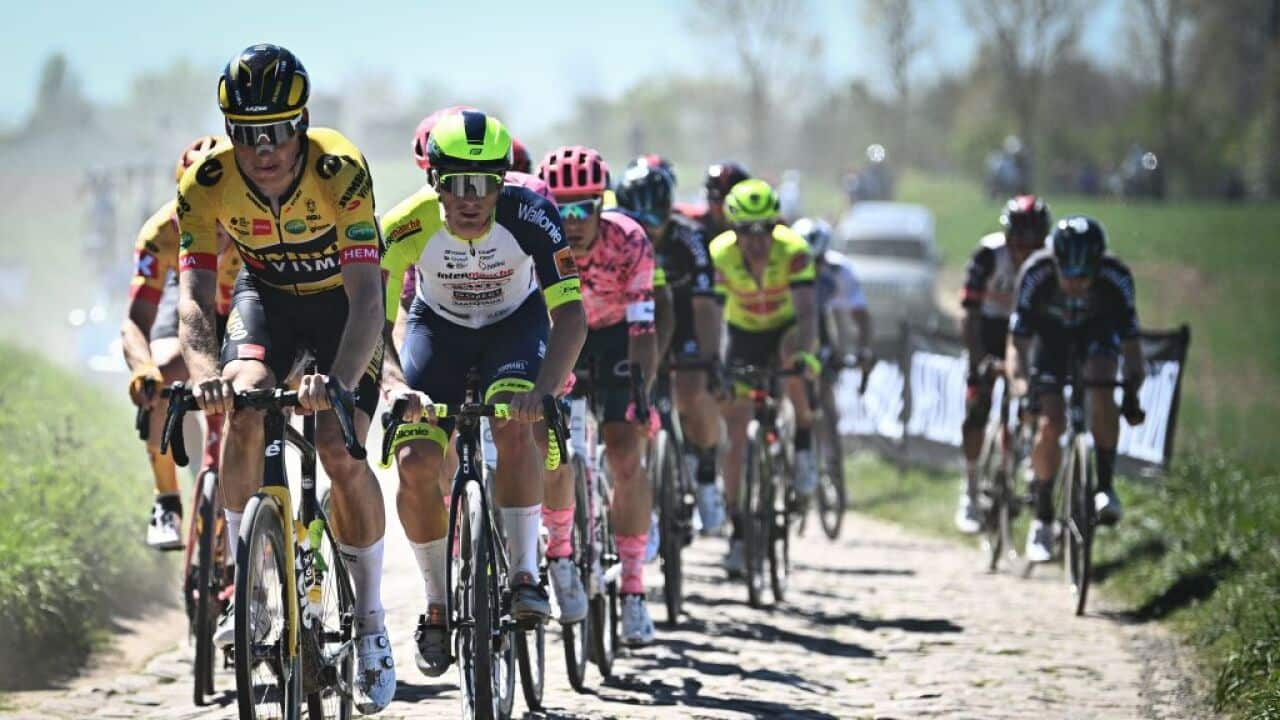The Tour has had a turbulent relationship with the cobbles, with stages in 2010 and 2014 being absolutely chaotic before a calmer visit in 2015 was followed by a much tougher ride through Roubaix in 2018, where most of the favourites finished together despite a fair few mishaps along the way, with Richie Porte a notable casualty ahead of the cobbles.
The total amount of pavé for the 156 kilometre stage from Lille-Arenberg Porte du Hainault is slightly less than in 2018 at 19.4 kilometres as well as the number of sectors with 11 in comparison to the previous 15. While this may seem easier, it means the average length of each sector will be longer.

The profile of the cobbled sectors that will greet riders in Stage 5 of the 2022 Tour de France.
Sectors 3 and 4 both measure up at 2.4 kilometres while sector 5 sits at 2.8 kilometres, where the stage will surely be set alight with huge crashes and punctures a big possibility.
Route director Thierry Gouvenou revealed the decision to bring back the cobblestones came from trying to spice up a stage going through a flat region, which can often times become placid viewing with a break carving out a huge lead as the peloton lets them go.
"Every time we're in a flat region, we try to find ways to liven up the race," Gouvenou told Cyclingnews.
"Sometimes we try and find wind up near the coast, and sometimes we look for cobblestones, which are there to ignite the first week of the race and create some time gaps."
"It's true that last time there weren't so many gaps, so that's why I'm hoping for a few more this year. That's why I put in some longer sectors.
"That's the main difference, and it can change things. The accumulation of long sectors can provoke splits, and I hope we'll have the first true time gaps of the Tour at Arenberg on Wednesday."
Gouvenou's addition of cobblestones to Stage 5 has reignited the debate of including the pavé in the French Grand Tour, which has always been split on both sides. The cobbles can make for incredible moments, but at the expense of huge damage to riders' race hopes.
A crash or a puncture can cause riders to fall out of contention for victory and in the case of serious injury, out of the race entirely.
Australian Jack Haig said he was just hoping to get through the stage without any scratches and finish with the favourites, though that may be easier said than done.
"We did a recon early in the year and I was pleasantly surprised it wasn't as hard as I was expecting," Haig told SBS' Dan Jones before the start of Stage 4.
READ MORE

Tour de France 2022: Stages 1-3 wrap
"Hopefully we can get through unscathed and finish with the other GC guys."
QuickStep-AlphaVinyl boss Patrick Lefevere has said cobbles don't belong in the Tour, while UAE Team Emirates DS Aart Vierhouten said the second sector of Wednesday's stage, “does not belong in any race.”
Gouvenou doesn't care for the criticisms though, maintaining the cobbles are just a different kind of challenge than others included in the Tour.
"There are risks everywhere," he said.
"The stages in Denmark had risks, the start of the Tour is always a game of risks. You can lose riders anywhere."
"Taking things to an extreme, you wouldn't imagine a Tour de France without mountains, but why not? There are riders who deserve to show themselves, the Van der Poels, the Van Aerts, the Alaphilippes. All these riders deserve to be at the forefront, so that's why we propose some stages that suit them."
"The other reason we do this is you need different types of teammates: teammates for the wind, teammates for the cobbles. And, in turn, that means fewer teammates for the mountains," he said.
"When you have fewer climbers and less team support in the mountains, that's a good thing for the Tour de France."
Whatever happens in this stage, it will be must-see viewing and may prove to be one of the most decisive days of the entire Tour de France.
Watch from 9.20pm AEST on the SBS SKODA Tour Tracker, with the SBS television and SBS On Demand broadcast beginning at 9.30pm AEST.











